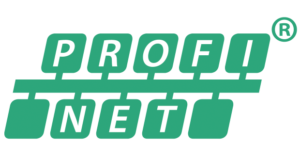We often use an age-old catchphrase during our PROFINET one day training classes, “But wait, there’s more!” when we get to the latter part of the day. At that time we’ve usually covered the standard PROFINET application functionality and continue talking about optional PROFINET features and additions. We’ve found that most engineers and developers don’t realize what the optional PROFINET features are and their purpose. Many are surprised when we say “PROFINET does that, just check with the vendor and see if they’ve implemented it.” This article will clarify PROFINET’s optional features and give the reader a quick list which they can use when looking at their next PROFINET project.
More Features
Since these features are optional, application engineers should check with the product vendor if they are looking for one of the items below for their application. This list can also be used by developers and product managers (vendors) when determining their PROFINET product scope.
| Optional PROFINET features | Description |
|---|---|
| Network Redundancy with Media Redundancy Protocol (MRP) | Media Redundancy Protocol provides network ring redundancy for PROFINET IO real time networks |
| System Redundancy | Allows a primary and backup controller for redundant applications with PROFINET |
| Device Redundancy | Allows a device to have multiple interfaces and redundancy with PROFINET |
| Shared Device | Distribution of device functions to various controllers |
| Shared Inputs | Multiple access to inputs by various controllers |
| Device Access | Allows a device to be accessed by a configuration tool and parameters to be read or written |
| Supervisor Access | Allows takeover of an IO device by an IO supervisor to check inputs, outputs and device function |
| Extended Device Information (Identification & Maintenance Records 1-4) | Extended device identification (location designation, installation date, etc.) |
| Direct data exchange / Multicast Communication relation (MCR) | Multicast communication relation allows multiple devices to communicate in direct data exchange |
| Simple Network Management Protocol (SNMP) | Allows Simple network management protocol and topology information to be read out |
| Simple device replacement | Allows a controller to automatically name a replaced IO device in case of device failure and replacement |
| Configuration in Run (CiR) | Allows a device to be configured and set up even with the controller in run |
| Time Stamping | Allows time stamps to be used and based off a real time clock |
| Fiber Optic Cable diagnostics | Fiber Optic cable diagnostics provide enhanced diagnostics for maintenance in case the cable is losing signal strength over time |
| Fast Startup (FSU) | Fast startup after power cycle in around 500ms for specific applications (ex: tool changer) |
| Isochronous Real Time (IRT) | Isochronous Real Time allows for synchronous communication using bandwidth reservation and scheduling down to 250 μS with < 1μS jitter for motion control applications |
| Dynamic Frame Packing (DFP) | Dynamic Frame Packing with IRT is optimized for line structures and allows 31.25μS update times for high speed motion control applications |
| IRT with Media Redundancy for Planned Duplication (MRPD) | Network Media Redundancy for Planned Duplication for IRT systems, two way transmission |
| Tool Calling Interface (TCI) | Tool Calling Interface used to call up a device specific engineering tool |
| Individual Parameter Server (iPar) | Individual Parameter Server (iPar) for automatic parameter assignment of devices (ex: for safety) |
| Application and Device Profiles | Special application / device profiles for certain applications (ex: safety, energy, drives) or device data sets for specific device types (ex: encoders). PN-PA for process automation PROFINET International (PI) provides multiple application profiles on their website |
| Manufacturer Specific Alarms | Manufacturer specific PROFINET diagnostic alarms (ex: redundant power supply fault and manufacturer specific error code) |
Summary
As we see PROFINET use continuing to grow, we are finding that most vendors now support many of these optional services as it benefits their customers. In the future PI may change some of these options to be mandatory backed by popular demand. Who knows? What features do you think are necessary? Are we missing anything you would like to see? Become a member of PI and influence the direction and future of PROFINET. More information about these options and mandatory ones can be obtained by looking at the descriptions in the PROFINET Conformance Classes document in “Section 6 – Complete overview of functions” and you can also see our previous article about conformance classes. These describe the features that have to be supported based on a particular conformance class A, B or C.
To learn more join us in our certification or developer training.
 For more information, download the full White Paper:
For more information, download the full White Paper: